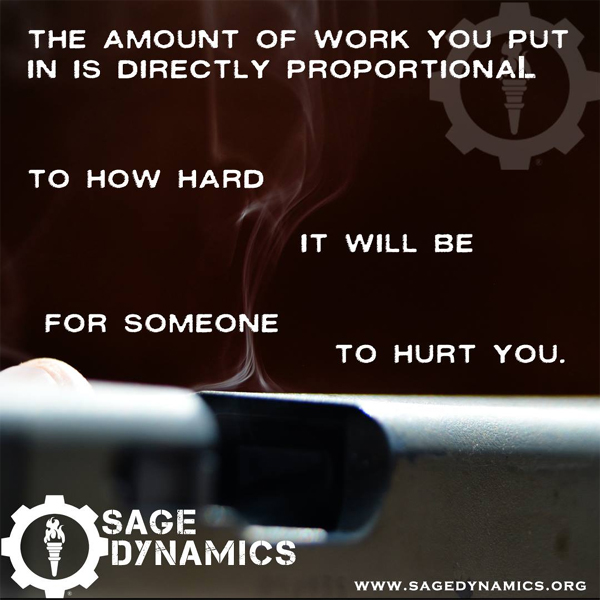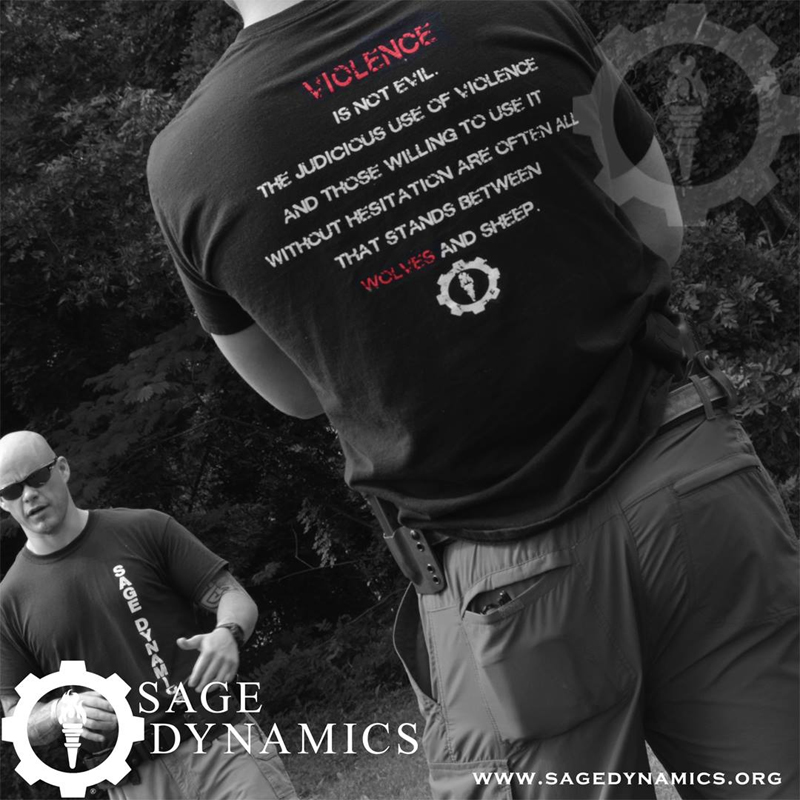Continued from earlier today.
Yesterday I introduced my problem with regards to training 2 “gunfighters” who admitted they did not much want to gunfight (see Part 1 if you missed it). I discussed my believe that every person has something that would motivate them to violence when it is needed. To remind you, many of the exemplars in this article are drawing on the training of LEOs – however, my point applies to everyone. As far as the body’s response to stress is concerned, there is no difference between a parking lot shooting in St. Louis andan alleyway firefight in Mosul. Tools are different, the reason for being there is different and perhaps even expectation prior to the actual fight is different, but the nervous systems responses are the same.
Claude Shannon. Shannon’s Information Theory. How does that relate to training reticient pseudo pipe-hitters? I’ll explain – now, I don’t have a doctor’s understanding of how the mind works, but I do have a warrior’s understanding of how the mind works. It comes down to simplicity.

My research on Col. Boyd’s OODA loop led me to Dr. Eagleman, who led me to the good Dr. Shannon, an electronic enginner mathematician-cryptologist who is widely considered to be the father of phone and computer communication. Shannon developed a theory while working for Bell Laboratories that was based on human communication and reconstructed it to assist with data transmission. Shannon’s Information Theory is nearly everywhere you look and you may probably don’t eve realize it. What is it? Well in an all-nighter of coffee and Red Bull, I learned that Information Theory, simply put, states that the transmission of information at all times should remain as simple as possible. The most common words in language are often the shortest and because the most common words only assist in the construction of a point, a listener could miss portions of the sentence and still glean the meaning. What the hell does this have to do with teaching mindset?
Why, everything.
A stud is going to get it because they want to get it. I can reach and relate to them with tales of heroic officers, soldiers and citizens and they emotionally connect with the intent and the message. They listen to the entire sentence so to speak, whereas my two reluctant officers don’t because they are not emotionally invested in the outcome of the lesson. But they still pick up on what is being said, they understand it even if they don’t internalize it. My uphill battle was coming up with a way to reach them on a functional level even if I couldn’t reach them emotionally. Of course the answer is often staring you right in the face. Emotions were the primary reason they were opposed to the idea of violence, so my appeal to their emotions was a vehicle to getting them to get it. Not to manipulate their convictions or tweak their morals, but to show them why it was so important that they understood what society expects of them if they are ever called on to confront a lethal threat. In keeping with the spirit of Claude Shannon’s Theory, I simplified my point to a sentence that would drive the lesson.
A stud is going to get it because they want to get it.
My weapon is a tool, an extension of my will; it exists to solve and prevent problems of an unfortunate nature in which no other tool is suitable.

Further simplified.
Problem + tool = solution.
This, as much as possible, removed the emotion of human concern that often complicates the internalization of a message. I’m neither a psychologist nor a neurologist, I don’t have a doctor’s understanding of how the mind works, but I do have a warrior’s understanding of how the mind works and I know that emotion can slow or accelerate reaction time, provide or remove motivation and complicate or simply a decision. Complexities abound. What is simple is a tool. We get it, we want to know how to use it, and we want to be good at it. Now when you attach a moral responsibility to that tool, the desire to be proficient with it goes up much higher than I can count. There is a sense of urgency in the realization that the use of a firearm carries with it a moral acceptance of the power over life and death. This is mindset at its infancy. An epiphany of responsible power.
Of the two officers mentioned in Part 1, I am confident I reached one. A 50% success rate. Despite being off to a failing grade, I have continually honed and refined my approach to mindset and would like to think I have reached many more. If the message can be internalized, can be related to, the whole sentence does not have to be heard; only the message.
I don’t have a doctor’s understanding of how the mind works, but I do have a warrior’s understanding of how the mind works and I know that emotion can slow or accelerate reaction time, provide or remove motivation and complicate or simply a decision.
So what am I saying? The message must, at all times, remain as simple as possible. This has helped me immensely in driving the point of dedication to training. If someone is not emotionally invested in the idea of training that they need, I found that appealing to their personal convictions and then making the connection between that and the moral responsibility attached to their occupation (or simple ownership of a firearm for self-defense) I was able to not bring them to my level of thinking, but relate to them on theirs. I have found that nothing drives mindset more than morality. In the military it was always about the “guy to your left and right,” in law enforcement it was always about “running towards gunfire to save lives,” But for the citizen, what is the common glue that drives men and women to become more proficient, to actually take the time to care about their skills? When it comes to saving lives, we don’t get to choose when or where it happens. There is a higher expectation for soldiers to see combat, for officers to face down violent felons, though the lower expectation for the citizen in no way changes the circumstances once the need for force occurs. Mindset is about recognizing the possibility. It’s as simple as a self-reflective moment in which we all realize that the will to win, the carrying of a firearm, is not enough. We must also prepare to win. Preparation is dedication to reality. It’s in the software, so to speak.
Preparation takes many forms but it is all driven by mindset. Dedication, resolve, willpower, motivation, morale, I-will-not-die-today, all these and more come from the purpose shaped mind. But we lose things in the clutter, and this is where Claude Shannon’s Information Theory is once again priceless. The second cycle of OODA is “Orient”, but what does Orient mean? It’s the physical act of focusing one’s attentions on a stimulus and then weighing it against personal knowledge, beliefs, culture,
upbringing and the environment (among other things). “Orient” has little to do with the physical act of directing attention and more to do with perceiving something and weighing it against who you are. Mindset is who you are. It is the sum of your beliefs, your training, your practice, your resolve and your shortcomings. Mindset stands between excuses and results. The simplicity of a proper mindset is up to you.
I carry, therefore I must train. I carry; therefore I must be ready and willing to use force. I carry; therefore I have a responsibility to be better than I was yesterday. I carry; therefore I will not give up.
This is Mindset. Everything after this that does not motivate is clutter. If you don’t want to stop the bad guy, you aren’t going to train and you aren’t going to have the mindset needed to stop the bad guy. Everyone is going to have different motivations for why they are willing to fight if need be; for me it has always been that force is a tool to solve or prevent a problem in which no other tool is suitable. I may not be quick to violence, but when it is the only option, I will use it without reservation.
Respectfully, Breach-Bang-COWAN!

Check out Sage Dynamics whe you have time, or pick up a copy of COWAN!’s training DVD.
Read The Blue Collar OODA Loop: http://tinyurl.com/ll4bxvk
Read Mindset: more than acronyms and color codes part 1: http://tinyurl.com/kv7678t
Read Fight Like a Girl: Practical EDC vs. Frumps & Rucks: http://tinyurl.com/loe2v5b
Read Are you a soft target? http://tinyurl.com/koxpne2
Read Every Day Carry vs. Every Day Ready: http://tinyurl.com/mjh58hk
Mad Duo, Breach-Bang-CLEAR!







0 Comments